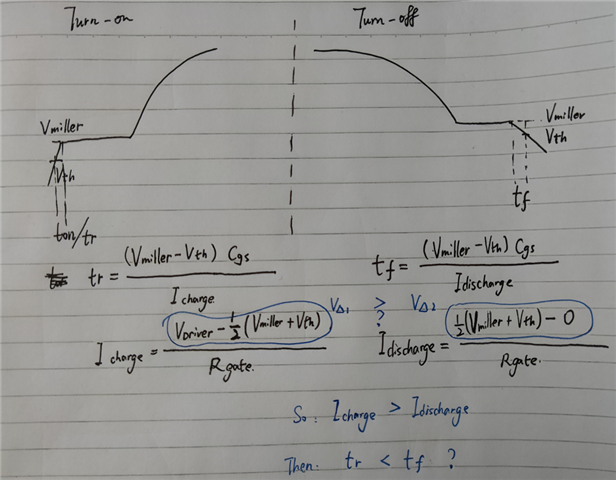Hi experts,
Hope you are doing well, and happy international women's day, if you're a female expert.
Why always the tr is longer than tf?

In my perspective, when turn-on or turn-off, the time needed is current(charging or discharging) related. Suppose there is the same Rgate, then the current will be decided by VΔ. Considering Vdriver= 10V, Vth=1.8V, then we can get VΔ1>VΔ2. therefore, tr should less than tf?
Please help to review my calculations, in which 0.5(Vmiller-Vth) is used to simplify the average voltage during switching on& off.

Thanks.
Marsh Cai.

